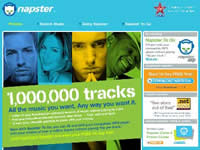 Napster UK has teamed up with Channel 4 to broadcast a short series of live TV music shows, creating the first national terrestrial television programme to be run by a digital music service.
Napster UK has teamed up with Channel 4 to broadcast a short series of live TV music shows, creating the first national terrestrial television programme to be run by a digital music service.
Napster UK has announced the deal to broadcast the predictably titled “Napster Live”, which will take the form of six 11 minute programmes featuring “established and emerging acts”.
Each episode will serve up an exclusive performance of two songs by a featured artist, along with an interview, biography and the all-important competition spot.
The programmes are being put together by independent television production company Blaze TV (who also knock out the weekly music show CD:UK).
Included in Channel 4’s ‘T4 Youth and Music’ programming, the first show will be screened at midnight on Saturday April 16 and feature rock band Garbage.
Other acts so far confirmed for Napster Live on Channel 4 include MOBO-winning UK R&B artist Estelle and UK rockers The Subways.
Napster Live already exists on the Napster digital music service as audio-only recordings, but the TV show will showcase a new format produced exclusively for Napster and Channel 4 by Blaze TV. Music from the TV show will be made available online at a later date on the Napster UK service.
“We’re incredibly excited to be teaming up with Napster on what feels like a truly unique and exciting proposition for 4Music,” frothed Neil McCallum, Commissioning Editor, T4, Youth & Music. “The bands booked are exactly the sorts of artists we’ve been supporting and this allows us to capitalise on bringing even more live music to a wider, up-for-it audience.”
“To extend the Napster experience to television is the logical next step in the UK roll out of the biggest brand in digital music,” purred Leanne Sharman, Napster vice-president and UK general manager.
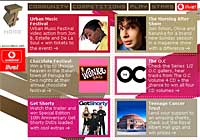 Building up to a crescendo of mutual backslapping, Sharman added: “Channel 4 has a deserved reputation for groundbreaking and forward-looking programming as well as championing live music, so we’re delighted to make our TV debut on their platform. Napster is also extremely fortunate to have a partner like Blaze TV whose production skills, expertise and contact book have proven invaluable in creating this series.”
Building up to a crescendo of mutual backslapping, Sharman added: “Channel 4 has a deserved reputation for groundbreaking and forward-looking programming as well as championing live music, so we’re delighted to make our TV debut on their platform. Napster is also extremely fortunate to have a partner like Blaze TV whose production skills, expertise and contact book have proven invaluable in creating this series.”
Not one to miss out on the quote frenzy, Conor McAnally, Blaze TV director of programmes, offered this insight: “In a world where the production and consumption of music are changing so drastically and so rapidly we are delighted to be involved with the market leader in music digital downloading and to have been given the opportunity to create exciting new programming for Channel 4 whose commitment to music, and especially new music, is unparalleled in the UK”.
Although eleven minute pop music programmes are hardly going to change the face of modern TV, Napster’s move reflects the inevitable convergence between online and terrestrial TV, with download charts already hitting the mainstream.
The series will be broadcast every Saturday night on Channel 4 from April 16, 2005 for six weeks.
 Video Networks, providers of the HomeChoice entertainment and communications service, has announced the addition of a brand new R.E.M. video-on-demand (VoD) channel to its platform.
Video Networks, providers of the HomeChoice entertainment and communications service, has announced the addition of a brand new R.E.M. video-on-demand (VoD) channel to its platform. While useful, this isn’t quite as slick as it sounds: if a viewer hears a track they want to buy, they have to click on the onscreen information button which will provide a number to text. A code is then sent back to them which they can enter when they log onto the Internet to download the music track. When we spoke to HomeChoice, they told us they were working on a more integrated way of getting pay-for content to their customers.
While useful, this isn’t quite as slick as it sounds: if a viewer hears a track they want to buy, they have to click on the onscreen information button which will provide a number to text. A code is then sent back to them which they can enter when they log onto the Internet to download the music track. When we spoke to HomeChoice, they told us they were working on a more integrated way of getting pay-for content to their customers.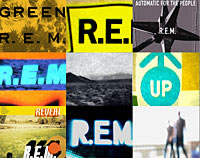 Roger Lynch, Chairman and Chief Executive, Video Networks Ltd said: “The addition of this on-demand channel is not only a true coup for R.E.M. fans but also ensures Video Networks continues to offer the most innovative music content on TV in the world today.”
Roger Lynch, Chairman and Chief Executive, Video Networks Ltd said: “The addition of this on-demand channel is not only a true coup for R.E.M. fans but also ensures Video Networks continues to offer the most innovative music content on TV in the world today.”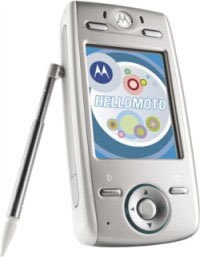 After the humiliating no-show of their much hyped (and currently in-limbo) iTunes phone at CeBIT earlier this month, Motorola have hit back with two new music phones.
After the humiliating no-show of their much hyped (and currently in-limbo) iTunes phone at CeBIT earlier this month, Motorola have hit back with two new music phones. Sporting a ‘slider’ form factor, the E725 is a music player-cum-smartphone featuring a 1.9″ display (176 x 220 pixels resolution) with dedicated music keys, 5-band graphic equaliser and dual stereo speakers with virtual surround sound.
Sporting a ‘slider’ form factor, the E725 is a music player-cum-smartphone featuring a 1.9″ display (176 x 220 pixels resolution) with dedicated music keys, 5-band graphic equaliser and dual stereo speakers with virtual surround sound. New figures released by the BPI (British Phonographic Industry) confirm that UK music fans are the numero uno, mad-for-it music buyers in the world, with each tune-loving Brit buying on average 3.2 CDs per person per year.
New figures released by the BPI (British Phonographic Industry) confirm that UK music fans are the numero uno, mad-for-it music buyers in the world, with each tune-loving Brit buying on average 3.2 CDs per person per year. It also raises questions about recent BPI lawsuits against alleged P2P file-swappers and the promotional role the networks may be playing.
It also raises questions about recent BPI lawsuits against alleged P2P file-swappers and the promotional role the networks may be playing.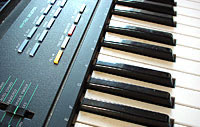 With album bundles and sales of digital EPs also doing good business in the UK, the Official UK Charts Company estimate that the total UK market for downloads topped 9 million units in 2004.
With album bundles and sales of digital EPs also doing good business in the UK, the Official UK Charts Company estimate that the total UK market for downloads topped 9 million units in 2004.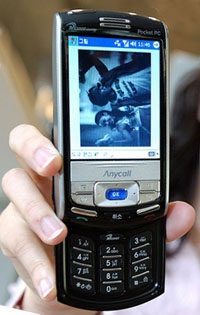 Samsung’s R&D team’s crack-like addiction to creating new products continues apace with the announcement of a new Wireless LAN Music Phone.
Samsung’s R&D team’s crack-like addiction to creating new products continues apace with the announcement of a new Wireless LAN Music Phone. Sadly, there’s no QWERTY keyboard on the handset.
Sadly, there’s no QWERTY keyboard on the handset. Yahoo has whipped out its wildly wedgified wallet and snapped up the online photo-sharing service Flickr, less than a week after launching a beta test of its new blogging tool.
Yahoo has whipped out its wildly wedgified wallet and snapped up the online photo-sharing service Flickr, less than a week after launching a beta test of its new blogging tool.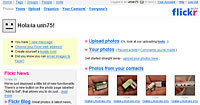 There will be some early integration, however, with the ability to log into Flickr using a Yahoo ID and password.
There will be some early integration, however, with the ability to log into Flickr using a Yahoo ID and password. European telco AB has announced that it’s launched the first worldwide free TV station available on 3G mobile phones, via its own TV channel Tango.TV (TTV).
European telco AB has announced that it’s launched the first worldwide free TV station available on 3G mobile phones, via its own TV channel Tango.TV (TTV).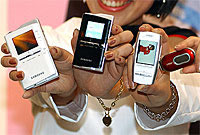 Until now, Apple has been pretty safe in its position of master of all digital music players. That’s lead to speculation of their crown slipping. We’re fresh back from the European consumer show CeBIT and saw many, many good looking, highly functioned, portable music players there.
Until now, Apple has been pretty safe in its position of master of all digital music players. That’s lead to speculation of their crown slipping. We’re fresh back from the European consumer show CeBIT and saw many, many good looking, highly functioned, portable music players there. MP3 playing device includes software for sending and receiving Internet-based phone calls.
MP3 playing device includes software for sending and receiving Internet-based phone calls.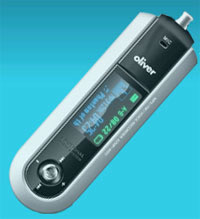 Ezmax demonstrated the device at their stand at CeBIT, plugging the player into a notebook PC and successfully making a call via the VoIP dialling software.
Ezmax demonstrated the device at their stand at CeBIT, plugging the player into a notebook PC and successfully making a call via the VoIP dialling software.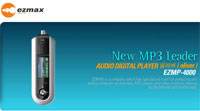 In addition, the device is capable of voice recording and sports a two-colour (blue and yellow) 128 pixel by 64 pixel OLED screen.
In addition, the device is capable of voice recording and sports a two-colour (blue and yellow) 128 pixel by 64 pixel OLED screen.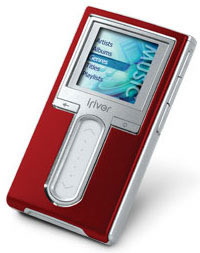 Shipments of MP3 players soared by an enormous 116% in 2004, as hundreds of wallet-tempting products arrived in response to the phenomenal success of Apple iPod player, according to a survey by Market Intelligence firm, iSuppli.
Shipments of MP3 players soared by an enormous 116% in 2004, as hundreds of wallet-tempting products arrived in response to the phenomenal success of Apple iPod player, according to a survey by Market Intelligence firm, iSuppli.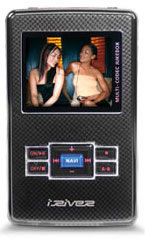 The iSuppli report also predicts that HDD-based MP3 player shipments will grow by a CAGR of 41.8% from 2004 to 2009, as compared to 22.9% for flash-based players.
The iSuppli report also predicts that HDD-based MP3 player shipments will grow by a CAGR of 41.8% from 2004 to 2009, as compared to 22.9% for flash-based players.